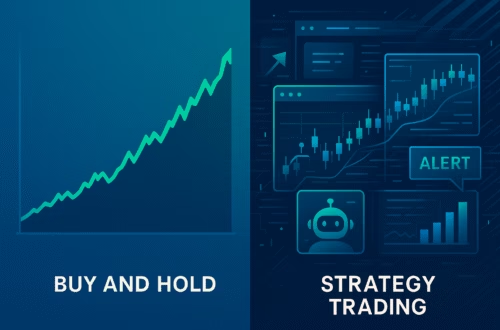rading can be a challenging venture, especially when it comes to evaluations with companies like Apex Trader Funding. Many traders find themselves struggling due to common mistakes that can easily be avoided. This article will explore the top five mistakes that traders make and provide insights on how to overcome them. By understanding these pitfalls, you can enhance your trading strategy and improve your chances of success.
Mistake 1: Holding Winners for Too Long
One of the most prevalent mistakes traders make is holding onto winning trades for too long. The belief that you must let your winners run can be counterproductive, especially during evaluations with firms like Apex Trader Funding or Bulenox, both of which employ trailing drawdown rules. When you hold on to a position that has moved in your favour, there is a significant risk that the price will eventually reverse.
Consider this scenario: you enter a trade and it moves positively, showing a profit of $1,000. Rather than taking profits, you decide to hold. If the price then retraces and you exit at a smaller profit of $250, you may feel satisfied with the gain. However, you have also increased your trailing drawdown closer to your current balance. This can lead to a situation where you risk blowing your account because of the drawdown exceeding your limits.
To mitigate this risk, it’s advisable not to let profits on any single trade exceed $500. By exiting a position early, you can secure your gains without allowing the potential for a loss to increase significantly. Trading should prioritise risk management to ensure long-term success.
Mistake 2: All In, All Out Risk Management Strategies
Another critical error is employing all in, all out risk management strategies. Many new traders believe that committing all their capital to a single trade will yield the highest returns. However, this approach is detrimental to achieving consistent profitability.
Profitable traders often scale in and out of their positions. This method not only helps to manage risk but also allows for guaranteed profits on trades. For instance, if you start with two contracts and the trade moves in your favour by 7.5 points, closing one contract at that point secures a profit. This leaves you with one contract still in play, allowing you to reduce your overall risk while still maintaining a potential for profit.
Scaling out of trades, rather than going all in or out, can alleviate the pressure of trailing drawdowns and provide a more stable trading experience. This strategy ensures that you can still benefit from favourable market movements while protecting your account from significant losses.
Mistake 3: Not Understanding the Game
Many traders fail to recognise that proprietary trading firms are not your friends; they are businesses designed to profit from your trading activities. Understanding this dynamic is crucial. These firms establish rules that may seem beneficial but often exploit common trading behaviours that lead to failure.
Traders often fall into the trap of following the crowd, making decisions based on emotions rather than logic. For instance, many traders will only trade one account at a time, which can heighten stress and reduce performance. By purchasing multiple accounts, traders can spread their risk and trade more freely.
Utilising multiple accounts can also enable you to take advantage of discounts offered by funding companies. By rotating accounts and trading during specific time windows, you can increase your chances of passing evaluations and ultimately securing funding.
Mistake 4: Ignoring Risk of Ruin Rules
The concept of risk of ruin is often overlooked by traders, yet it is a crucial factor in determining long-term success. Risk of ruin refers to the probability that a trader will lose enough capital to be unable to continue trading. Understanding this statistic is essential for any trader serious about their trading career.
For example, if you are risking 9% of your equity with a win rate of 55% and a payoff ratio of 1.7, the risk of ruin is relatively low. However, if your win rate drops to 50% with a payoff ratio of 1, the chances of blowing your account increase significantly.
To avoid falling into this trap, you must be aware of your win rate and risk parameters at all times. Regularly evaluating these numbers will help you make informed decisions and adjust your strategies accordingly. By doing so, you can significantly reduce the likelihood of account failure.
Mistake 5: Trading for Extended Periods Without Breaks
Finally, one of the most detrimental mistakes traders make is trading for long hours without taking breaks. Mental fatigue can severely impact decision-making abilities, leading to poor trading outcomes. Studies have shown that as trading sessions progress, cognitive function declines, which can result in mistakes and emotional trading.
To combat this issue, it is essential to implement structured trading windows. For instance, you could trade for 30 minutes, take a break, and then return for another session. This pattern allows your brain to reset, ensuring that you remain focused and effective during trading hours.
By respecting your mental limits and taking breaks, you can maintain consistent performance throughout the day. Many traders who adopt this strategy report improved profitability, as they are less likely to make impulsive decisions due to fatigue.
Conclusion
Understanding and avoiding these five common mistakes can significantly enhance your trading performance and increase your chances of success with evaluations from firms like Apex Trader Funding. By managing your risk effectively, scaling your trades, and respecting your mental limits, you can create a robust trading strategy that supports long-term profitability.
Remember, trading is not just about making quick profits; it’s about developing a sustainable approach that allows you to navigate the complexities of the market successfully. By learning from the mistakes of others and applying these insights, you can position yourself for success in your trading journey.



